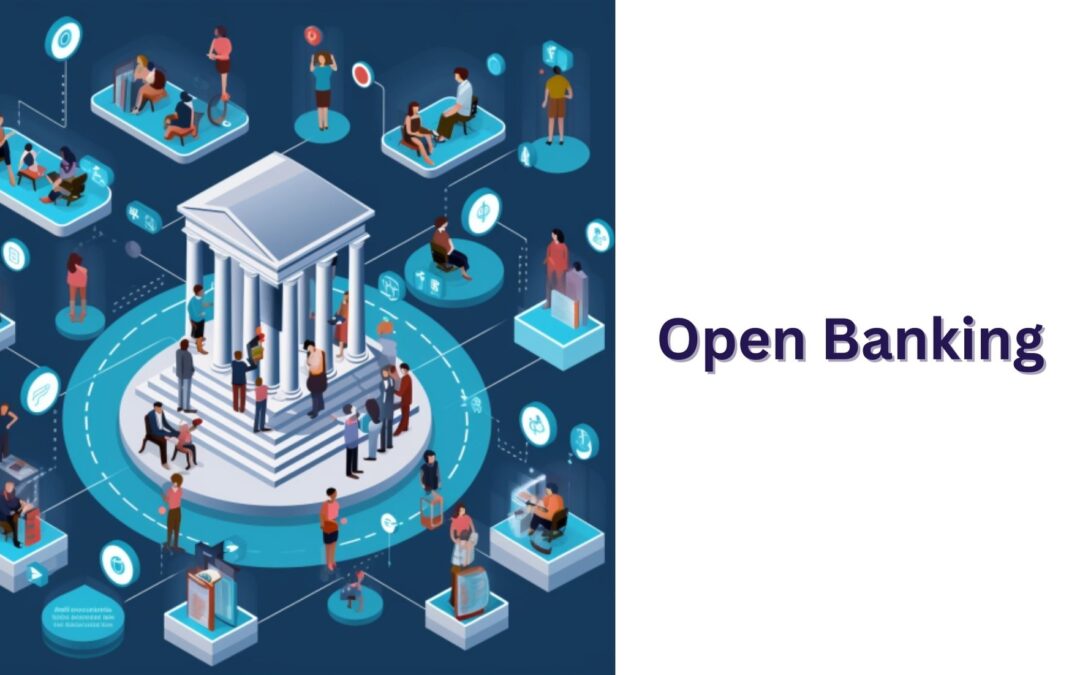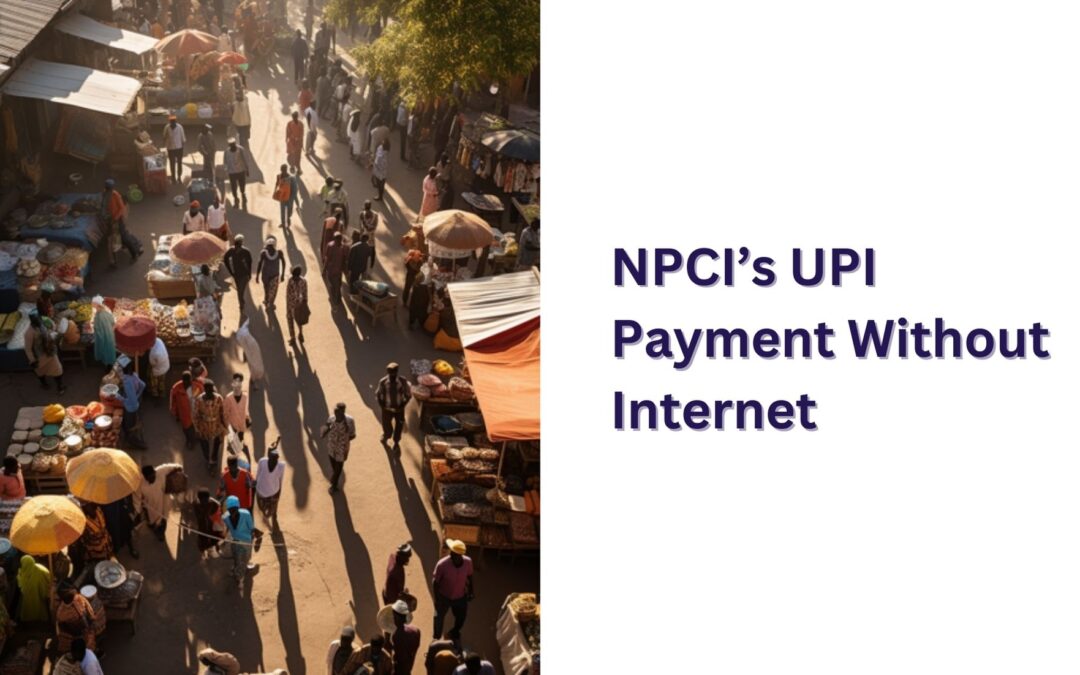
by Toulika | Nov 16, 2023 | Culture & Money, Investment
In a world where convenience is key, the ability to open a bank account online has become a game-changer for many. Say goodbye to lengthy queues and paperwork hassles; the digital era welcomes you to a seamless banking experience. Let’s explore the ins and outs of online account opening and why it’s the smart choice for today’s fast-paced lifestyle.
Hey, do you also want to know how to save your money securely in a digital platform? Download the Jar App now!
The Power of a Click: Initiating Your Online Account
Gone are the days when visiting a brick-and-mortar bank was the only option. With a simple click, you can kickstart the process of securing your financial foothold in the digital realm. Online account opening offers unparalleled accessibility and saves you precious time.
Breaking Down the Process: A Step-by-Step Guide
1. Choose Your Bank Wisely
Selecting the right bank sets the tone for your financial journey. Opt for institutions that align with your needs, whether it’s low fees, robust online services, or extensive ATM networks. Research and make an informed decision.
2. Navigate to the Bank’s Website
Once you’ve chosen your ideal banking partner, visit their website. Look for a user-friendly interface that guides you through the account-opening process. Remember, a seamless website ensures a smooth experience.
3. Click on “Open an Account”
Locate the “Open an Account” button—it’s your gateway to a world of financial possibilities. Clicking this initiates the process, prompting you to provide necessary information to create your account.
4. Fill in Your Details Securely
Your personal and financial details are sensitive. Rest assured, reputable banks employ robust security measures. Fill in the required information accurately, ensuring a seamless verification process.
5. Submit Identification Documents
To comply with regulations and ensure the security of your account, you may need to submit identification documents. This step enhances the integrity of the banking system.
The Benefits You Can’t Ignore
1. Time-Efficiency
Bid farewell to time-consuming visits to physical branches. Online account opening condenses the process, allowing you to establish your banking presence swiftly.
2. 24/7 Accessibility
Traditional banking hours are a thing of the past. With an online account, you gain round-the-clock access to your finances, enabling you to manage your money on your terms.
3. Paperless Transactions
Join the eco-friendly revolution. Online banking significantly reduces paper usage, contributing to a greener planet. Your transactions become digital, efficient, and environmentally conscious.
Conclusion: Embracing the Future of Banking
In conclusion, the era of opening a bank account online is here, offering unparalleled convenience and efficiency. The process is straightforward, secure, and tailored to suit the needs of today’s dynamic individuals. Embrace the future of banking—make the switch to online account opening today. Your financial journey awaits at the click of a button.
Frequently Asked Questions (FAQs) – Opening a Bank Account Online
Is it safe to open a bank account online?
Yes, reputable banks implement robust security measures to ensure the safety of your personal and financial information during the online account opening process.
What documents are required for online account opening?
Typically, you may need identification documents, proof of address, and, in some cases, proof of income to complete the online account opening process.
Can I open an account online with any bank?
Most banks offer online account opening services. It’s recommended to choose a bank that aligns with your financial needs and preferences.
How long does it take to open a bank account online?
The timeframe varies, but online account opening is generally faster than traditional methods. It can take anywhere from a few minutes to a few days, depending on the bank’s processes.
In many cases, yes. Once your information is verified, you can usually access your online banking account immediately for basic transactions.
Are there any fees associated with opening a bank account online?
Fees vary between banks. Some offer fee-free accounts, while others may have associated costs. It’s crucial to review the fee structure of the chosen bank.
What should I do if I encounter issues during the online account opening process?
If you face any difficulties, contact the bank’s customer support for assistance. Most banks provide online chat, email, or phone support to guide you through the process.

by Toulika | Nov 16, 2023 | Culture & Money, Investment
In today’s dynamic financial landscape, the question on many minds is, “Can I get a loan with a credit score of 550?” Let’s delve into this crucial inquiry and explore the possibilities that exist for individuals seeking financial assistance.
Do you want to save money in 24k digital gold? Save on the Jar App now!
Understanding the Impact of a 550 Credit Score
The Credit Score Landscape
In the realm of credit scores, a rating of 550 is considered suboptimal. Lenders often view it as a red flag, signaling a higher risk for default. However, this doesn’t mean securing a loan is impossible; it simply requires a strategic approach.
Can I Get a Loan? Challenges and Opportunities
Navigating the Terrain
Securing a loan with a credit score of 550 poses challenges, but with the right information and approach, doors can open. It’s vital to be aware of the hurdles while focusing on the available opportunities to improve your financial standing.
Strategies for Loan Approval with a 550 Credit Score
1. Explore Specialized Lenders
Targeting Your Approach
Specialized lenders, such as those offering bad credit loans, are more lenient in their evaluation criteria. Exploring these options can increase your chances of approval, providing a tailored solution for individuals with lower credit scores.
2. Consider a Secured Loan
Can I Get a Loan? – Collateral as Assurance
Opting for a secured loan, where you offer collateral, provides lenders with added assurance. This security often results in more favorable terms and higher approval rates, making it a viable option for those with a credit score of 550.
3. Seek a Co-Signer
Sharing the Responsibility
Having a co-signer with a higher credit score can significantly enhance your loan eligibility. This individual agrees to take on the financial responsibility if you default, instilling confidence in lenders and increasing the likelihood of approval.
4. Address Existing Debts
Clearing the Path
Prioritize settling outstanding debts before applying for a new loan. Demonstrating a commitment to financial responsibility can positively impact the lender’s perception, potentially offsetting the impact of a lower credit score.
The Road Ahead: Building a Stronger Financial Profile
1. Regularly Monitor Your Credit
Stay proactive by monitoring your credit score regularly. Identifying and addressing discrepancies or inaccuracies can contribute to a gradual improvement in your overall credit profile.
2. Implement Healthy Financial Habits
Sustainable Practices
Incorporate responsible financial habits into your lifestyle. Timely bill payments, reduced credit card balances, and prudent financial decisions can contribute to a gradual improvement in your credit score over time.
Final Thoughts
In conclusion, while a credit score of 550 may present challenges, it doesn’t signify the end of your financial journey. By employing strategic approaches, exploring alternative lending options, and focusing on improving your creditworthiness, you can navigate the complexities of securing a loan. Remember, informed decisions and proactive financial management are key to unlocking the doors to financial opportunities, even with a credit score of 550.
FAQs
Why is a credit score of 550 considered challenging for loan approval?
A credit score of 550 is considered suboptimal, signaling higher risk for lenders. It may result in challenges, but strategic approaches, such as specialized lenders and secured loans, can overcome these hurdles.
What makes specialized lenders more accommodating for lower credit scores?
Specialized lenders, focusing on bad credit loans, have more flexible criteria. They understand the challenges of lower credit scores and provide tailored solutions, increasing the chances of loan approval.
How does addressing existing debts impact my loan application?
Prioritizing the settlement of outstanding debts showcases financial responsibility to lenders. This proactive step can positively influence their perception and improve the overall likelihood of loan approval.
Can I still get a loan without collateral with a credit score of 550?
While it’s more challenging, exploring specialized lenders and improving your creditworthiness can still open doors to unsecured loan options. However, expect terms and conditions to be less favorable compared to secured loans.
How often should I monitor my credit score, and why is it important?
Regularly monitoring your credit score is crucial for staying informed about your financial health. Identifying discrepancies early allows you to address them promptly, contributing to a gradual improvement in your credit profile.

by Toulika | Nov 15, 2023 | Culture & Money, Investment
In the rapidly evolving landscape of finance, one term has emerged as a beacon of change – Open Banking. This revolutionary concept is transforming the traditional banking sector, ushering in an era of unprecedented connectivity, innovation, and customer empowerment.
On a side note, how cool would it be if you had a digital platform to save money in 24k digital gold? Download the Jar App and start saving!
Understanding the Essence of Open Banking
Open Banking is more than just a technological upgrade; it’s a paradigm shift in how financial services operate. At its core, it allows third-party financial service providers access to a user’s financial data through secure Application Programming Interfaces (APIs). This collaborative approach promotes transparency, competition, and, most importantly, a more tailored and enhanced user experience.
The Impact: Why Open Banking Matters
1. Empowering Consumers
Open Banking places the power back into the hands of consumers. With the ability to share financial information securely, individuals gain greater control over their data, leading to a more personalized and efficient banking experience. Whether it’s managing budgets, tracking expenses, or accessing innovative financial services, it puts the user in the driver’s seat.
2. Fostering Innovation in FinTech
The collaboration facilitated by Open Banking is a breeding ground for FinTech innovation. With access to a treasure trove of data, FinTech companies can develop cutting-edge solutions that cater to specific consumer needs. From advanced budgeting tools to AI-driven investment platforms, the possibilities are limitless, shaping a financial landscape that is both dynamic and responsive.
3. Driving Competition and Efficiency
The traditional banking sector is no longer operating in isolation. It introduces healthy competition by allowing new entrants to join the financial ecosystem. This not only challenges established institutions to enhance their services but also promotes efficiency, resulting in cost-effective solutions for consumers.
Key Considerations in the Open Banking Journey
1. Security as a Cornerstone
While the benefits of Open Banking are vast, security is paramount. Financial institutions must prioritize the implementation of robust encryption, authentication, and authorization protocols to safeguard user data. Building and maintaining trust is crucial for the success of its initiatives.
2. Navigating Regulatory Waters
Open Banking doesn’t exist in a regulatory vacuum. Adhering to established standards and compliance measures is essential for the seamless integration of third-party services. Regulatory frameworks ensure that innovation coexists with stability and security.
The Ongoing Journey
Today, Open Banking stands as a dynamic force, continually shaping the financial industry. The ongoing journey involves refining regulatory frameworks, addressing security challenges, and exploring new avenues for collaboration.
Bottom Line
As we stand at the precipice of a financial revolution, embracing Open Banking is not just an option; it’s a strategic imperative. Whether you’re a financial institution navigating this new terrain or a consumer seeking a more tailored experience, it is the gateway to a future where innovation, transparency, and customer-centricity converge. The journey has just begun, and the possibilities are limitless. Open your mind to Open Banking, and let the digital transformation unfold.

by Toulika | Nov 15, 2023 | Culture & Money, Investment
In a game-changing stride towards enhancing digital transactions, the National Payments Corporation of India (NPCI) has introduced a revolutionary feature—UPI Payments Without Internet. This article delves into the intricacies of this groundbreaking initiative, exploring its implications, benefits, and how it’s poised to transform the landscape of online payments.
Do you want to save money in a secure digital platform? Download the Jar App now.
Exploring the Future of Digital Payments
NPCI’s Visionary Leap Embarking on a transformative journey, NPCI sets the stage for a new era in digital payments. This move reflects NPCI’s commitment to innovation and customer-centric solutions. Let’s unravel the layers of this groundbreaking initiative.
The Essence of UPI Payments Without Internet
Breaking Barriers NPCI Launches UPI Payments Without Internet eliminates the dependency on a stable internet connection. Users can now make UPI transactions seamlessly, even in low connectivity zones. This marks a significant leap towards financial inclusivity.
Empowering Rural Transactions In rural areas with erratic internet access, NPCI’s innovation ensures that individuals can participate in the digital economy without hindrance. This move aligns with the government’s vision of a digitally empowered nation.
How NPCI Achieved the Unthinkable
Innovative Technology at Play Behind this groundbreaking feature lies cutting-edge technology that enables secure and instant transactions without the need for a constant internet connection. Understanding the technology ensures users trust and adopt this revolutionary change.
Collaborative Efforts NPCI’s collaboration with tech experts and financial institutions played a pivotal role in bringing this innovation to life. The synergy between different entities ensures a robust and reliable system.
NPCI Launches UPI Payments Without Internet: A User’s Perspective
Seamless User Experience Users can now experience uninterrupted digital transactions, irrespective of internet connectivity. This feature enhances the overall user experience, making digital payments more accessible and convenient.
Security Measures Understanding the concerns related to security, NPCI has implemented stringent measures to safeguard transactions. Exploring the security aspects provides users with confidence in adopting this innovative payment method.
Frequently Asked Questions
How does NPCI’s UPI Payments Without Internet work?
In essence, NPCI’s UPI Payments Without Internet utilizes innovative technology that allows secure transactions through intermittent network connectivity. It leverages a combination of offline and online mechanisms to ensure the smooth flow of transactions.
Is it safe to use NPCI UPI Payments Without Internet?
Absolutely. NPCI has implemented robust security measures to safeguard user transactions. Your data is encrypted and protected, ensuring a secure digital payment experience.
Can I use UPI Payments Without Internet on any smartphone?
Yes, this feature is designed to be compatible with a wide range of smartphones. Whether you have a high-end model or a budget-friendly device, NPCI’s UPI Payments Without Internet is accessible to all.
Are there any additional charges for using UPI Payments Without Internet?
No, NPCI has ensured that this groundbreaking feature comes with no additional charges. Users can enjoy the benefits of UPI Payments Without Internet without worrying about extra fees.
What happens if my transaction is interrupted due to poor connectivity?
NPCI has designed the system to handle interruptions seamlessly. If your transaction is disrupted, the system will automatically retry, ensuring a smooth and hassle-free payment process.
Can I use UPI Payments Without Internet for international transactions?
Currently, NPCI’s UPI Payments Without Internet is designed for domestic transactions within India. International transactions may be explored in future developments.
Conclusion
NPCI’s launch of UPI Payments Without Internet marks a significant leap in the evolution of digital transactions. This innovative feature not only addresses connectivity challenges but also paves the way for a more inclusive and accessible digital economy. Embrace the future of digital payments with NPCI’s groundbreaking initiative.

by Toulika | Nov 15, 2023 | Culture & Money
In an era where financial inclusion is pivotal, microloans have emerged as a game-changer. This article delves into the vibrant world of microloans, exploring their rising popularity and the profound impact they have on individuals and communities alike.
Do you want to save in digital gold? Download the Jar App now.
The Growing Popularity of Microloans
Microloans: A Catalyst for Financial Inclusion
They are not just small sums of money; they represent a powerful tool for financial inclusion. These loans, often disbursed to entrepreneurs in developing regions, enable individuals to kickstart businesses, fostering economic growth.
Navigating the Landscape: How Microloans Work
Understanding the dynamics of microloans is crucial. From application to repayment, the process is tailored to empower borrowers. The simplicity of the application coupled with flexible repayment terms makes them accessible to a broader audience.
One of the remarkable aspects contributing to the growing popularity of microloans is their ability to create a ripple effect. As individuals thrive, communities flourish, breaking the cycle of poverty and paving the way for sustainable development.
Microloans vs. Traditional Banking: Bridging the Gap
Traditional banking can be a hurdle for many, especially in underserved communities. These loans bridge this gap, offering a financial lifeline to those who would otherwise be excluded from the formal banking sector.
Microloans in Developing Economies: A Driving Force
In developing economies, these act as a driving force, propelling local businesses and fostering economic independence. The adaptability of these loans to diverse entrepreneurial ventures contributes to their widespread adoption.
Conclusion
The growing popularity of microloans signifies a shift towards a more inclusive and sustainable financial landscape. As we witness the transformative power of such loans in empowering individuals and communities, it becomes evident that these small financial tools carry the potential to make a significant difference in the world.
Frequently Asked Questions
What makes microloans different from traditional loans?
They differ in scale and accessibility. Traditional loans are often larger and may have stringent criteria, excluding many individuals. Microloans, on the other hand, are smaller in amount and designed to be more inclusive, particularly for budding entrepreneurs.
Can anyone apply for a microloan?
Yes, they are designed to be inclusive. While eligibility criteria exist, they are generally more flexible than traditional loans. Many such programs prioritize individuals with entrepreneurial aspirations, irrespective of their financial background.
How do these loans impact local communities?
They have a profound impact on local communities by fostering economic growth and empowering individuals. As businesses thrive, they contribute to job creation and overall community development.
Are microloans only for small businesses?
While they are commonly associated with small businesses, they can also support various ventures, including agricultural initiatives and community projects. The versatility of microloans makes them adaptable to different entrepreneurial endeavors.
What challenges do the borrowers face?
Microloan borrowers may encounter challenges such as high-interest rates and limited loan amounts. However, the positive impact on business growth and community development often outweighs these challenges.
How can microloans be accessed in underserved regions?
Various microfinance institutions and non-governmental organizations actively work to provide these loans in underserved regions. These organizations play a crucial role in ensuring financial inclusion and empowerment.





